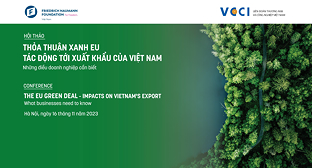Investment Incentives and WTO Subsidy Disputes: Experience of Japan and the United States of America
17/05/2010 12:00
by Ken MatsumotoCEO, KM International Associates,Inc. Former Director of the Fair Trade Center, Japan
Session ?
The Experience of Japan with regard to CVD Disputes
It is my honor and pleasure to speak at this conference today. I want to thank the members of the Organizing Committee of the Conference of Ho Chi Minh City University of Law and at Nagoya University for inviting me.
I can appreciate the interests by the Vietnamese in CVD in relation to the investment incentives. Now I will try to speak responding to the questions given to me by the organizer.
I. Introduction to the Japanese experience with regards to CVD disputes
(1) Japan as complainant – cases brought forward by Japanese enterprises against other countries
Japan used trade remedies against import products only a few times in the past. There were a few investigations for anti-dumping duty (hereafter AD) and one case of CVD against Korean DRAM a kind of computer memory which was produced and exported by Hinix Semiconductor (hereafter Hinix). The CVD investigation was initiated in August 2004. The duration of the duty was to be from January 2006 to December 2010 and the rate was 27.2%. The investigation team of the Japanese government consisted of the officials from the Ministry of Treasury and Ministry of Economy, Trade and Industry (METI).
In regard to treatment of non-market economy, Japan had recognized market economy status for China in the AD case against Ferro Silico-Manganese, additives for steel making, in 1993. In another AD case of Electrolytic Manganese Dioxide (EMD), materials to make batteries, in 2009 the Japanese government recognized market economy status for the Chinese products.
(2) Japan as respondent
(A) The Imposition of CVD
There were nine CVD investigations against Japanese products in the 1970s conducted by the US authorities, three of which resulted in imposition of CVD. The details are unknown. But even if the record on these cases were found, it would not be very useful today as reference because they were the cases before the Agreement on Subsidies and Countervailing Measures took effect under the WTO in 1995.
(B) Response to WTO disputes settlement complaints regarding CVD imposed by Japan
The measures of the Japanese government to impose CVD on Korean DRAM in January 2006 was brought to the WTO DS procedure (hereafter DS) by the Korean government in March 2006, only two months after the imposition of CVD by the Japanese government. The Japanese responded at the panel and the Appellate Body proceedings, but the Korean argument prevailed on most of the accounts that resulted in the reduction of CVD rate from 27.2% to 9.1%. Furthermore, the Japanese government had to revoke the CVD completely in April 2009 due to the investigation on “changed circumstances” which was requested by the Korean government.
This is a case whether government subsidy by the Korean government existed when certain private banks provided financial aid to Hinix because the Korean government requested or pressured, while other banks refused to do so in absence of such government pressure. It is interesting to note that this is the first case in which the Japanese government ever imposed CVD. But this first case was challenged its WTO consistency at the DS procedure and Japan mostly lost.
It may be easy to be critical of the Japanese government for deciding to take measures on such a weak case that was not sustainable at the DS. But I would rather appraise the courage of the Japanese officials to decide to take this first action, since most of the government officials tend to be conservative and not to make the first step out of the traditional policy.
Các tin khác
- The Dispute Settlement Crisis in the World Trade Organization: Causes and Cures (16/03/2018)
- Modification of trade defence rules regarding non-market economy costs and prices (23/02/2018)
- Research Paper: Options for Disciplining the Use of Trade Remedies in Clean Energy Technologies (03/08/2017)
- Addressing the rise of Trade Remedies against Environmental Goods (03/08/2017)
- Anti-dumping Retaliation - —A Common Threat to International Trade (15/11/2016)
 Home
Home
 About Us
About Us




















